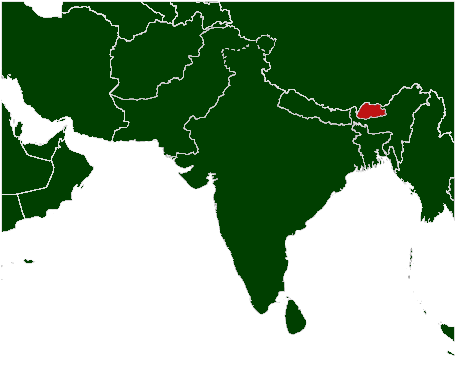
Circle the area on this map

B. After a century of absolute monarchy, Bhutan became a two-party parliamentary democracy with elections in 2008. Bhutan’s former and present kings proposed the constitution that led to democracy. The constitution also guarantees freedom of the press, but most of the nation’s journalists told a survey it does not exist in practice.
C. The Himalayan range is the world’s highest. The mountains were formed by the collision of the Indian tectonic plate and the Eurasian plate. The range runs from Pakistan on the west through India, Nepal and Bhutan into China’s Tibet Autonomous Region on the east.
A. About three quarters of Bhutan’s 750,000 people are Buddhists and another 22 percent are Hindu. Buddhism was introduced in the 7th century by Tibetan king who extended his empire into the territory that is now Bhutan.
D. Forests cover 72 percent of the country and soak up much more carbon than the nation’s people put into the atmosphere. Bhutan gets most of its energy from hydroelectric power, and more than a tenth of its cars are electric. The government aims to promote conservation as part of its plan to target Gross National Happiness. About 56 percent of all Bhutanese citizens are involved with agriculture, forestry or conservation.